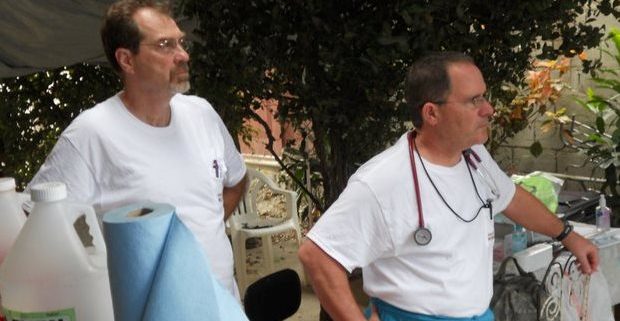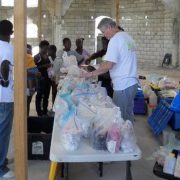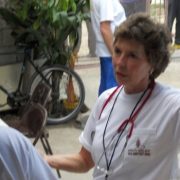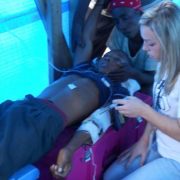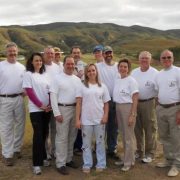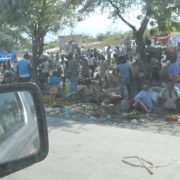Eleven Days in Haiti: Part 8 – The Hospital: Armed Guards, Razor Wire, and an Evacuation Plan
This is part 8 of the “Eleven Days in Haiti” series that started here: https://fbcbridgeport.org/eleven-days-haiti-part-1-series-intro. Be sure to get caught up if you missed a prior post!
DAY 7—SUNDAY 2AM-MONDAY 4AM—PART 1
THE HOSPITAL: ARMED GUARDS, RAZOR WIRE, AND AN EVACUATION PLAN
I just counted. I have eight pages of hand-written notes about one 24-hour shift in the cholera hospital. It was a unique, unforgettable experience that I must condense to something manageable. First of all, cholera is a devastating, quickly advancing illness. Persistent, uncontrollable vomiting and diarrhea leave the patient weak, malnourished and dehydrated. Untreated, it can kill within hours of contracting the disease. And yet, no one should die from cholera. Treatment is to re-hydrate and stabilize the patient. Once stable, patients are given single dose antibiotics. Those who die do so almost entirely from inadequate treatment. And so Samaritan’s Purse developed an adequate treatment facility.
After arriving at this facility around 1:30AM by way of an armed convoy of vans, our medical team received our orientation-a quick walk through and a demonstration of the emergency evacuation plan.
The armed guards and razor wire perimeter reminded us that Cite Soleil was one of Port-au-Prince’s most desperate neighborhoods.
The hospital consists of two main buildings, each able to hold about 90 patients each. And by “building”, I mean a state fair type pavilion with open rafters and walls made of the now familiar blue tarp. The tarp also provided separation barriers between the patient areas and the pharmacy, supply rooms, staff break rooms and changing rooms. Another connected facility provided areas for patient entry and discharge, triage and oral rehydration. Entrance and exit from the patient areas required a mandatory stop at a hand-washing station. There is no running water so an attendant opens a faucet on a water tank to assure there is no waste and no chance for recontamination. We also had to step through a carpeted box that had been saturated with bleach to decontaminate our shoes. These stations were strategically placed so that nobody could enter or exit a contaminated patient area without careful washing.
I was assigned to the pharmacy where I worked with a Haitian nurse and a translator. Many days, there are no pharmacists and the local staff must fill orders to the best of their ability with limited pharmacy training. Often, this lack of training and language barriers mean that a doctor or nurse is invited into the pharmacy to find what they need. If nothing else, I was able to streamline the pharmacy processes and teach the local staff a few procedures to ensure better safety, accuracy and accountability. With an actual pharmacist on hand, the nurse soon moved on to do actual nursing and I handled the pharmacy with 3 translators, each working an eight hour shift. The interaction with each of them was similar as we compared home, family, and working environments. The last one though was different. He somehow was studying English, French and organic chemistry with aspirations of a career in medicine. Yet for most of our time, he grilled me with questions about my faith, my church and if I had the chance to preach there. We got pretty deeply involved in comparisons of our churches and our Christian beliefs and practices.

